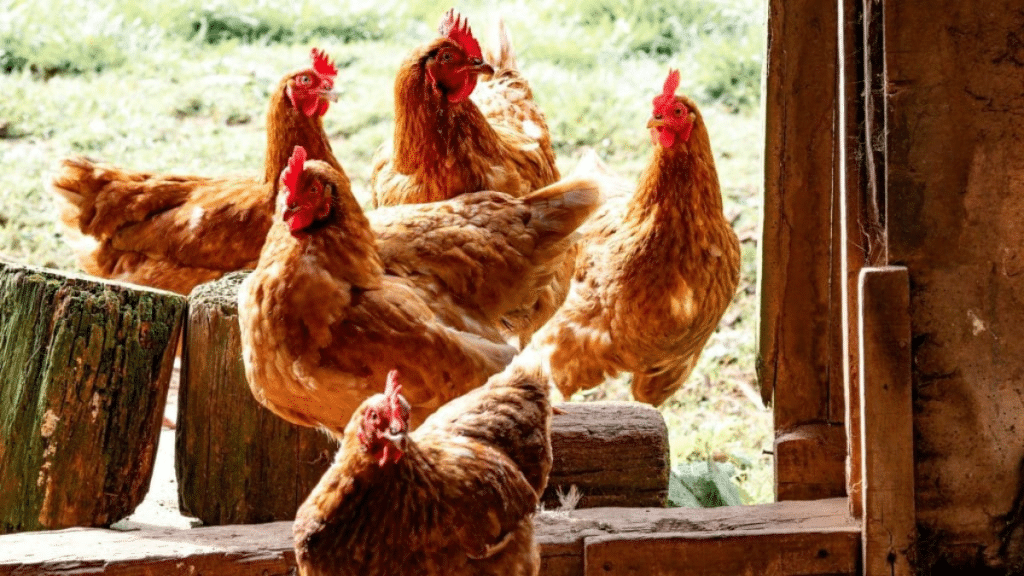Do you raise chickens in your backyard or on a small farm? If so, you’ve probably faced the challenge of choosing the right coop size for your flock. Finding the proper fit is essential, not just for hygiene and comfort, but also for how it impacts your chickens’ overall health and productivity. Chickens that live in clean, well-spaced environments are known to produce higher-quality eggs and meat compared to those kept in cramped or unsanitary conditions.
Buying a chicken coop can help in improving the living conditions of your chickens and hens. Now you might be wondering how to choose the right coop for your chickens and hens. Well, worry not! In this blog, we shall go through all the major points that you must keep in mind when choosing a coop for your backyard.
Why Your Chickens Need Enough Space
Just like us, chickens, too, need some space to move, to eat, to sleep. It is important to buy a coop that offers good space to each chicken. Now you can buy a small coop, but a tiny coop means unhappy chickens, unhappy chickens mean they will peck each other, break eggs, get stressed, and even stop laying eggs.
So here’s what you must see when buying a coop:
- Inside the Coop: Each chicken should have about three to four square feet.
- Outdoor Run: If they have a run, they should get eight to ten square feet each.
This space lets them move freely, keeps them from feeling crowded, and makes them happier.
How to Calculate the Perfect Coop Size
Now, let’s try to understand how to calculate the perfect size of your coop. Now the calculation isn’t rocket science, it’s pretty simple, actually. First of all, think about the number of chickens you plan to accommodate in a single coop.
Let’s say you have four chickens, so you need around 12 to 16 square feet inside the coop and 32 to 40 square feet in the outdoor run.
Here’s a pro tip: Always plan bigger than you have. If you have 4 chickens, buy a coop for 6 or 7 chickens. Why? You may ask. See, buying a bigger coop makes sure you don’t have to upgrade it later.
Giving Them a Cozy Sleeping Area
Chickens need a space to rest. It is a must for them. Naturally, chickens like to sleep off the ground like most of the birds. This helps them stay safe from most predators but also allows for a more comfortable sleep.
And this is why coops have a part called “Perches” for the chickens to rest. But what about the hens that are hatching eggs? For them, we have the nesting boxes. When choosing a coop for your backyard, you have to see for these features if you want to give a good quality of life to your chickens.
Fresh Air and Natural Light Matter
The coop shouldn’t feel dark and gloomy. Think for a second, would you like to stay in a house with no light, windows, or ventilation? No, right? The same is true for chickens and hens. They need clear air and natural light to stay healthy.
And besides the health perspective, there is also the matter of hygiene. A coop without proper ventilation can get damp and start smelling bad. And this pungent smell isn’t just bad for the chickens, but to humans as well. So, having a small window or vent can help solve this problem immediately.
Easy Access for Cleaning and Care
It may seem that the coop must be bought based on your hens and chicks, but you must also consider how easy it will be for you. Owning chickens comes with cleaning, feeding, collecting eggs, and other tasks.
Here’s what you must consider before choosing the coop:
Easy Cleaning: If you can, build a walk-in coop. It’s easier to clean without bending or crawling. For smaller coops, use removable trays for waste.
Egg Collection: Make sure you can easily reach the nesting boxes. Some coops have outside access, so you don’t have to enter the coop to grab eggs.
Food and Water: Make sure you have space for feeders and water containers that are easy to refill and keep clean.
Building a Coop That Lasts
The most important thing when choosing a coop is its durability. How long will the coop last? Will it survive harsh rain? Will it stay protected during winter? There are many questions you must ask. Buy what will last long and cost less in the long run.
See the material used for building the coop. If it is built from strong materials such as treated wood or metal, it will last long. Take a look at the roof to make sure it is rain-proof and you won’t end up with wet chickens during monsoon.
And most importantly, check the floor! It should be easy to clean and safe from any predator trying to dig up. Preferably, a raised-up coop would be a great choice to keep the hens dry and safe from land animals.
Final Thoughts
Finding the right chicken coop size isn’t just a matter of plugging numbers into a formula. It’s about providing your chickens with a safe and nice space to live in, so they should be comfortable and happy. Because you know, a tiny bit of extra wiggle room is always better than not enough.
Consider how many chickens you desire, design perches and nests for them, provide fresh air and light, and make it easy on yourself when it comes to cleaning. A well-designed, best-selling coop can those happy and healthy hens, which equals more organic eggs for you! So take your time, plan carefully, and soon you’ll have a coop that keeps your flock happy, healthy, and safe.
